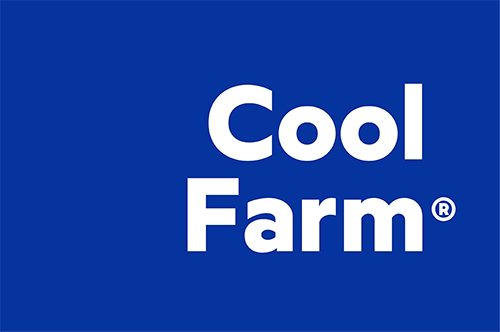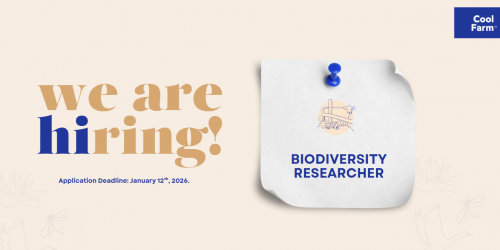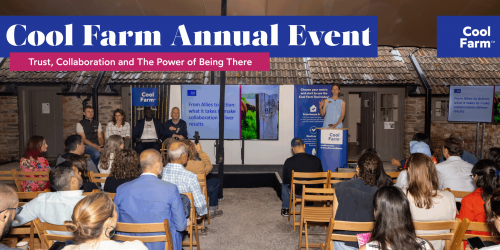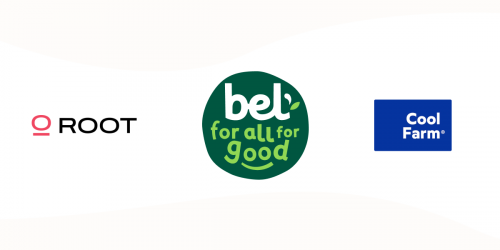A Q&A with Dr Megan McKerchar, Cool Farm’s Science and Methods Manager, on our Third-Party Verification Journey.
Q: As someone who is clearly very passionate about sustainable agriculture and helping businesses make the change to more sustainable processes, why, in your view, is third-party verification important for CFP?
A: I feel it is all about maximising the credibility of the tool. Cool Farm is underpinned by rigorous science and a fully transparent methodology, which is integral to its credibility. External verification can only strengthen this and add an extra layer of trust to the platform.
Essentially, it reassures users that the high standards of accuracy, reliability, and transparency that we claim for the tool have been tested and verified by a credible third party.
Q: During your time with Cool Farm, you’ve been clear that external verification is one of the most important things that needs to be achieved. What motivates you personally about the verification process?
A: For me, it is about empowering producers and businesses in the food supply chain to be able to make tangible, measurable change. Obviously, to achieve this, they need accurate and reliable tools, but in an increasingly packed space, how can people identify which platform will provide that?
External verification is a useful way to demonstrate this. It goes back to the credibility issue we spoke about earlier. It is not just Cool Farm saying the Cool Farm Platform is accurate and transparent, but an independent third party. That is why I am so passionate about this journey.
Q: Without mentioning specific deliverables, what does the verification process generally involve?
A: The process began with the 3Keel review back in 2023, which was then followed with a review stage that was completed last year. The formal verification to ensure consistency should take place this year.
During the review, our methodology, user interface, and guidance were assessed, with recommendations provided for verification.
Evaluation was conducted on the platform’s consistency with key standards including the Greenhouse Gas Protocol (Product Life Cycle Accounting and Reporting Standard), ISO 14067 (carbon footprint of products), Science-Based Targets initiative (SBTi) FLAG requirements, and WRI Land Sector and Removals Guidance (LSRG), and feedback focused on improvements to enhance credibility and practical usability for users.
It is an in-depth process that takes time to complete. But that is what makes it valuable and gives verification its integrity.
Q: What will this verification mean for our members and users of CFP?
A: Verification is a very positive step for our members and users. It proves that Cool Farm Platform is a credible and accurate tool for on-farm GHG assessments, helping members report emissions and removals confidently to support their sustainability goals.
Ultimately, it provides is peace of mind. Members can be assured that the methodology aligns with the guidelines they report to and base their decisions on. This ensures clarity on the impact of their choices on both their business and the environment.
Q: What would you say to members who need more information about the significance of this verification?
A: Verification is a step forward in ensuring trust and transparency. It demonstrates that Cool Farm is not only committed to providing scientifically robust tools but also to aligning with the highest international standards.
However, we understand that members might want a deeper understanding of the process and what it entails as we move forward. To help keep all of our stakeholders up to date, we will be updating our website as the process continues. We invite any members who want a more in-depth understanding of how verification will benefit them to join our standards Working Group.
Q: What are the broader implications for the agricultural sector if more tools are verified for accuracy and reliability?
A: The implications of demonstrably accurate sustainability reporting tools on agriculture are profound. It has the potential to drive meaningful change in sustainability and climate action on a global scale.
Of course, there needs to be widespread adoption of such tools for this to happen, but I believe that as everyone in the food supply chain gains a greater understanding of both the issue and how agriculture could be one of the biggest drivers of climate mitigation, adoption, measurement, and most importantly meaningful decision making, will become the norm.









